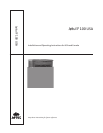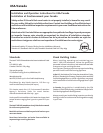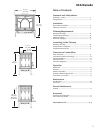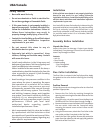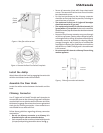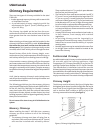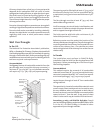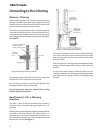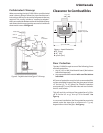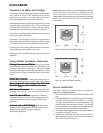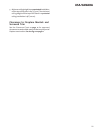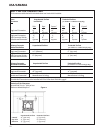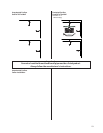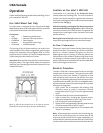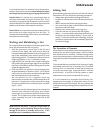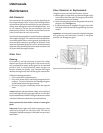
7
Chimneys shorter than 14 feet (4.27 m) may not provide
adequate draft. Inadequate draft can result in smoke
spillage when loading the stove, or when the door is open.
Poor draft can also cause back puffing (ignition of gas
build-up inside the firebox) and sluggish performance.
The minimum height does not, in itself, guarantee proper
chimney performance.
Excessive chimney height can promote over-strong draft
resulting in high stove temperatures and short burn times.
Excessive draft can be corrected by installing a butterfly
damper. Your Jøtul dealer is an expert resource to consult
regarding draft issues or other performance-related
questions.
Wall Pass-Throughs
In the U.S.
The National Fire Protection Association’s publication,
NFPA 211, Standard for Chimneys, Fireplaces, Vents and Solid
Fuel Burning Appliances permits four methods for passing
through a combustible wall. Before proceeding with any
method be sure to consult with your local building officials
to discuss any local code requirements.
Common Method:
See Figure 5. Remove all combustible materials from the
pass-through area ( around the chimney connector), a
minimum 12” (30.5 cm). A 6” (15.2 cm) diameter connector
will require a 31” x 31” (78.7 x 78.7 cm) square opening.
The opening must be filled with at least 12” (30.5 cm) of
brick around a fireclay liner. The liner must be ASTM C35
or equivalent, having a minimum wall thickness of 5/8”
(16 mm).
The Pass-through must be at least 18” (45.7 cm) from
combustible ceiling materials.
It will be necessary to cut wall studs, install headers, and
construct a sill frame to maintain the proper dimensions
and to support the weight of the brick.
The bricks must be solid brick with a minimum of 3 ½
inches thick (nominal 4”/ 102 mm).
Refractory mortar must be used at the junction of the
chimney and the pass-through liner. The pass-through liner
must not penetrate the chimney liner beyond the inner
surface of the chimney liner. Use extreme care when
constructing the hole in the chimney liner as the tiles can
shatter easily.
In Canada
The installation must conform to CAN/CSA-B365,
Installation Code for Solid Fuel Burning Appliances and
Equipment. Before proceeding be sure to consult your
local building inspector.
Common Method:
This method requires the removal of all combustible
materials from at least 18” (45.7 cm) around the chimney
connector’s proposed location. A 6” round liner requires
a minimum opening 43” x 43” (109.2 x 109.2) square.
Locate the pass-through at least 18” from combustible
ceiling materials.
The space that is cleared of combustible materials must
remain empty. Sheet metal panels can be used to cover
the area. However, when using a panel on both sides of
the wall, each cover must be installed on noncombustible
spacers at least 1” from the wall. If one panel of sheet
metal is to be used it may be installed flush to the wall.
See section 5.3.1 and 5.3.2 of CAN/CSA - B365-M91. Consult
your local building inspector, authorized Jøtul Dealer, NFPA
211 in the U.S. or CAN/CSA-B635 in Canada for other
approved wall pass-through methods.
Figure 5.
Masonry Wall Pass-through.
12”
30.5 cm
Header
Flue LinerWood Stud 2”
Clearance to
Chimney
Pass through
construction:
12” Brick from
thimble to
combustibles
12”
Sill / Support
Thimble: 5/8”
Fireclay Liner or
equivalent
USA/Canada



